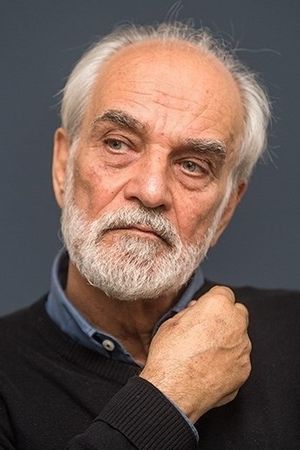Aydin Aghdashloo facts for kids
Quick facts for kids
Aydin Aghdashloo
|
|
|---|---|
| آیدین آغداشلو | |

Aghdashloo in 2014
|
|
| Born | October 30, 1940 Rasht, Iran
|
| Other names | Faramarz Kheybari |
| Education | Tehran University |
| Occupation |
|
|
Works
|
Termination Memories Falling Angels Identity: In Praise of Sandro Botticelli |
| Spouse(s) | |
| Children | 2, including Tara |
| Honours | Legion of Honour |
Aydin Aghdashloo (born October 30, 1940) is a famous Iranian painter, artist, writer, and film critic. He is known for his unique art style that mixes modern ideas with classic Iranian art.
Contents
Early Life and Schooling
Aydin Aghdashloo was born in Rasht, Iran. His father was an Azerbaijani Turk from a family that came from the town of Agdash.
When Aydin was a boy, his father noticed his amazing talent for painting and making models. He took Aydin to a local painter and teacher named Habib Mohammadi to help him develop his skills.
In 1959, when he was 19, Aydin started studying at Tehran University's School of Fine Arts. However, he left the university in 1967, just before he was supposed to graduate, to follow his own path as an artist.
Career as an Artist
In 1975, Aghdashloo had his first solo art show in Tehran. He displayed paintings of floating objects, dolls, and works inspired by the Renaissance, a famous period of art in Europe.
Helping Museums and Art Shows
Between 1976 and 1979, Aghdashloo helped open several important museums in Iran. These included the Reza Abbasi Museum and the Museum of Contemporary Art in Tehran.
After the Iranian Revolution in 1979, he organized many art shows. These shows were important for introducing modern Iranian art to people both in Iran and around the world. He helped bring exhibitions of Iranian art to other countries, including China, Japan, and Italy.
For his work in the arts, Aghdashloo received the Legion of Honour, one of France's highest awards.
His Unique Painting Style
When he was around 30, Aghdashloo became interested in creating surreal art. Surrealism is a style of art that looks dreamlike and strange. He painted objects that seemed to be floating in the air.
He also became known for painting faceless dolls. He said that painting dolls without faces helped him express complicated feelings and ideas that were hard to put into words.
After the Iran–Iraq War, his art often showed themes of decay and loss. He painted abandoned houses, broken windows, and old rusty locks. These images represented the difficult times the country was going through. He continued to use styles from classic Iranian art, known as miniatures, to talk about the modern world.
Most of his paintings are made with gouache, a type of paint similar to watercolor, on canvas.
Recent Work
Aghdashloo continues to be active in the art world.
- In 2021, he took part in an exhibition called "Memling Now," which showed how the famous artist Hans Memling has influenced artists today.
- In the summer of 2022, he spoke at an event to remember his friend and famous filmmaker, Abbas Kiarostami.
- Later in 2022, his art was featured in an exhibition at the Homa Art Gallery in Tehran.
Personal Life
Aydin Aghdashloo was married to actress Shohreh Aghdashloo from 1972 to 1980. In 1981, he married architect Firouzeh "Fay" Athari. They had two children, Takin and Tara Aghdashloo, but are now divorced.
In 2022, Aghdashloo publicly supported the protests in Iran. These protests called for greater rights and freedoms for women. He was one of many Iranian artists and scholars who signed a statement supporting student protesters in the country.
See also
 In Spanish: Aydin Aghdashloo para niños
In Spanish: Aydin Aghdashloo para niños
- List of Iranian painters


